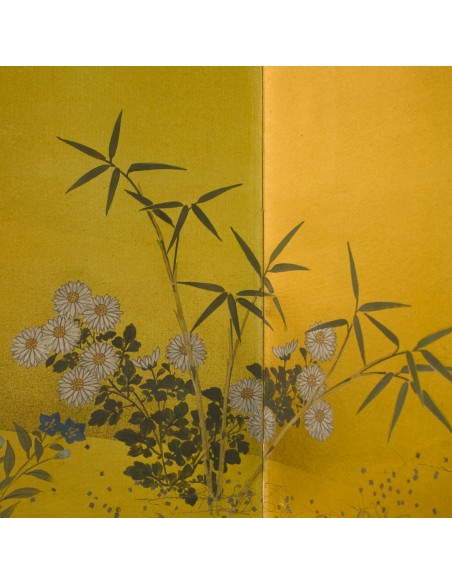Byobu Stellschirm 120 x 51
Small, 4-piece Japanese folding screen. Total width: 120 cm, height: 51 cm. Decorative element for standing or hanging. Painting in very good condition. Slight wear on the back. Foldable. Nature scene with bamboo, chrysanthemums and water. Strong gold leaf background. Period: Edo period (1603-1868) or early Meiji period (1868-1912). The stylized, asymmetrically balanced and two-dimensional painting is reminiscent of the Rinpa school.
Japanese folding screens, known as byōbu, combine art and functionality. These multi-piece folding screens consist of several panels and serve as decorative room dividers. They are typically decorated with beautiful paintings and calligraphy. Originating in China, the first screens arrived in Japan in the 8th century. Over time, the Japanese developed them into a distinct art form, with characteristic motifs, materials, and production techniques. They reached their heyday during the Momoyama period (1573-1603) and the early Edo period (1603-1868), when they became a status symbol of the samurai. During this period, gold leaf was often used as a background, giving the rooms an aura of wealth and power. The motifs on the screens are varied, ranging from detailed nature scenes to historical events, everyday scenes and allegorical images. As such, they are an important part of art history, reflecting cultural, social and political developments over the centuries. In modern living spaces, byōbu are a practical and aesthetic furnishing element. They serve as stylish room dividers, decorative art objects, artistic contrasts or impressive backdrops. Byōbu can enliven neglected corners of a room. Small byōbu can also be hung like paintings.




















